10.6: Tessellations |
您所在的位置:网站首页 › tessellations › 10.6: Tessellations |
10.6: Tessellations
|
Tessellating Shapes
We might think that all regular polygons will tessellate the plane by themselves. We have seen that squares do and hexagons do. The pattern of squares in Figure 10.119 is a translation of the shape horizontally and vertically. The hexagonal pattern in Figure 10.120, is translated horizontally, and then on the diagonal, either to the right or to the left. This particular pattern can also be formed by rotations. Both tessellations are made up of congruent shapes and each shape fits in perfectly as the pattern repeats. We have also seen that equilateral triangles will tessellate the plane without gaps or overlaps, as shown in Figure 10.121. The pattern is made by a reflection and a translation. The darker side is the face of the triangle and the lighter side is the back of the triangle, shown by the reflection. Each triangle is reflected and then translated on the diagonal. Escher experimented with all regular polygons and found that only the ones mentioned, the equilateral triangle, the square, and the hexagon, will tessellate the plane by themselves. Let’s try a few other regular polygons to observe what Escher found. Example 10.38 Tessellating the PlaneDo regular pentagons tessellate the plane by themselves (Figure 10.122)?
We can see that regular pentagons do not tessellate the plane by themselves. There is a gap, a gap in the shape of a parallelogram. We conclude that regular pentagons will not tessellate the plane by themselves. Your Turn 10.38 1. Do regular heptagons tessellate the plane by themselves?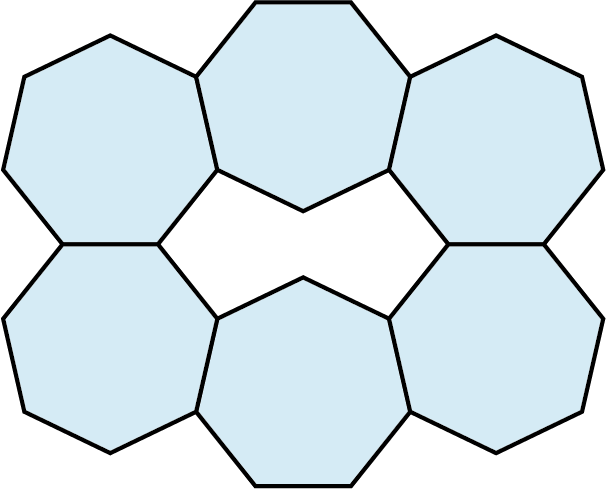 Figure 10.123
Example 10.39
Tessellating Octagons
Figure 10.123
Example 10.39
Tessellating Octagons
Do regular octagons tessellate the plane by themselves (Figure 10.124)?
Again, we see that regular octagons do not tessellate the plane by themselves. The gaps, however, are squares. So, two regular polygons, an octagon and a square, do tessellate the plane. Your Turn 10.39 1. Do regular dodecagons (12-sided regular polygons) tessellate the plane by themselves?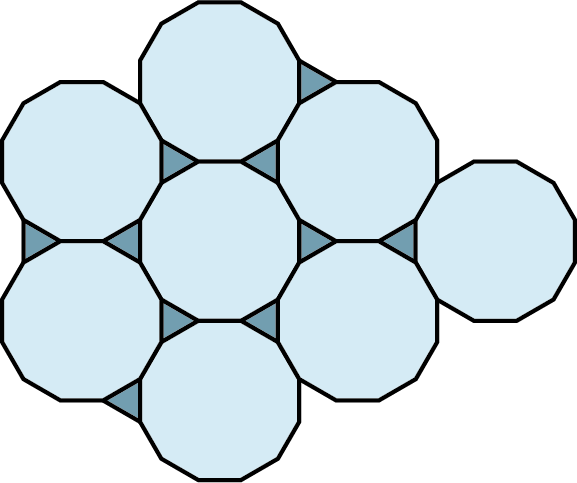 Figure 10.125
Figure 10.125
Just because regular pentagons do not tessellate the plane by themselves does not mean that there are no pentagons that tessellate the plane, as we see in Figure 10.126. Another example of an irregular polygon that tessellates the plane is by using the obtuse irregular triangle from a previous example. What transformations should be performed to produce the tessellation shown in Figure 10.127? First, the triangle is reflected over the tip at point AA, and then translated to the right and joined with the original triangle to form a parallelogram. The parallelogram is then translated on the diagonal and to the right and to the left. NamingA tessellation of squares is named by choosing a vertex and then counting the number of sides of each shape touching the vertex. Each square in the tessellation shown in Figure 10.128 has four sides, so starting with square AA, the first number is 4, moving around counterclockwise to the next square meeting the vertex, square BB, we have another 4, square CC adds another 4, and finally square DD adds a fourth 4. So, we would name this tessellation a 4.4.4.4. The hexagon tessellation, shown in Figure 10.129 has six sides to the shape and three hexagons meet at the vertex. Thus, we would name this a 6.6.6. The triangle tessellation, shown in Figure 10.130 has six triangles meeting the vertex. Each triangle has three sides. Thus, we name this a 3.3.3.3.3.3. Create a tessellation using two colors and two shapes. Answer
We used a parallelogram and an isosceles triangle. The parallelogram is reflected vertically and horizontally so that only every other corner touches. The triangles are reflected vertically and horizontally and then translated over the parallelogram. The result is alternating vertical columns of parallelograms and then triangles (Figure 10.131). 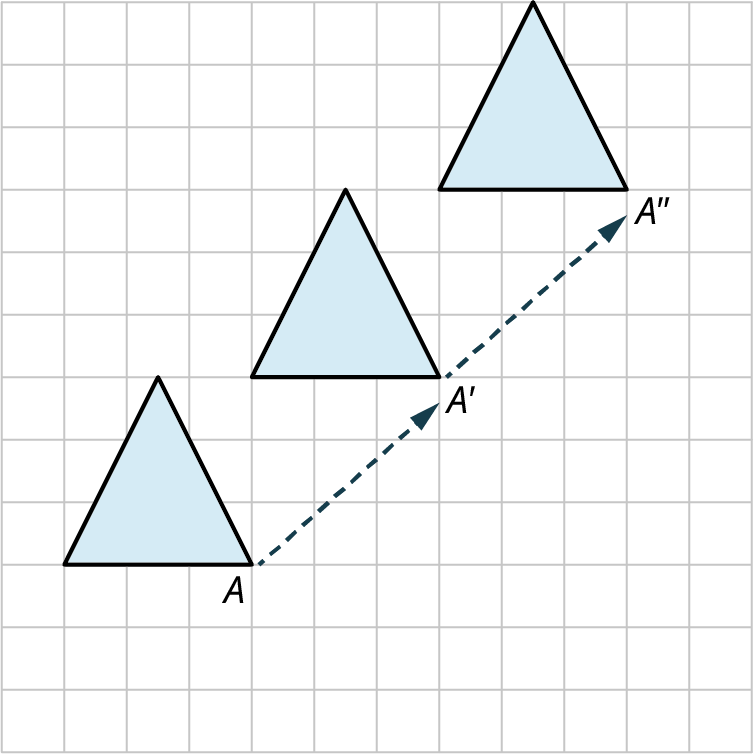 32.
Starting with the triangle with vertex /**/B/**/, describe how the transformation in this drawing is achieved.
32.
Starting with the triangle with vertex /**/B/**/, describe how the transformation in this drawing is achieved.
 33.
Starting with a triangle with a darker face and a lighter back, describe how this pattern came about.
33.
Starting with a triangle with a darker face and a lighter back, describe how this pattern came about.
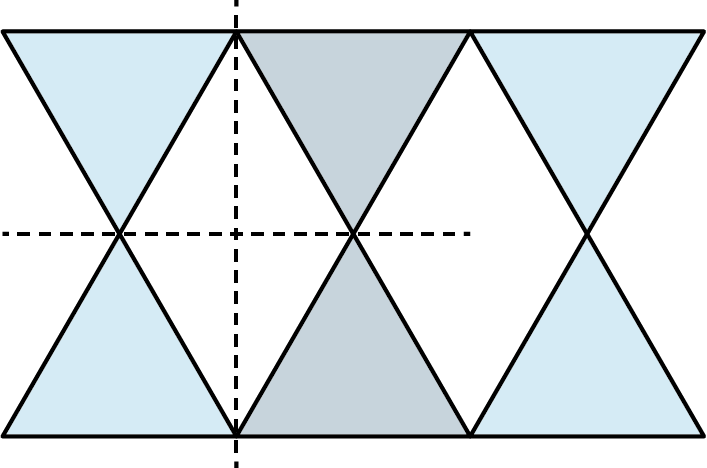 34.
Name the tessellation in the figure shown.
34.
Name the tessellation in the figure shown.
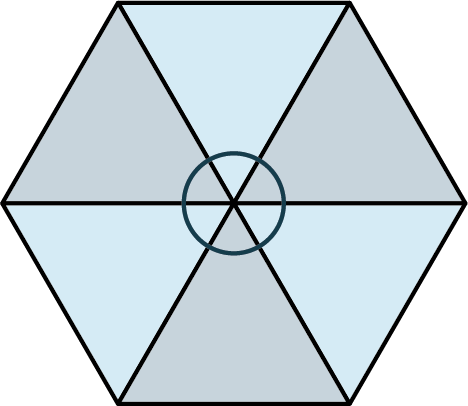 Section 10.5 Exercises
1.
What type of movements are used to change the orientation and placement of a shape?
2.
What is the name of the motion that renders a shape upside down?
3.
What do we call the motion that moves a shape to the right or left or on the diagonal?
4.
If you are going to tessellate the plane with a regular polygon, what is the sum of the interior angles that surround a vertex?
5.
Does a regular heptagon tesselate the plane by itself?
6.
What are the only regular polygons that will tessellate the plane by themselves?
7.
What is the transformation called that revolves a shape about a point to a new position?
8.
Transformational geometry is a study of what?
9.
Describe how to achieve a rotation transformation.
10.
Construct a /**/{90^ \circ }/**/ rotation of the triangle shown.
Section 10.5 Exercises
1.
What type of movements are used to change the orientation and placement of a shape?
2.
What is the name of the motion that renders a shape upside down?
3.
What do we call the motion that moves a shape to the right or left or on the diagonal?
4.
If you are going to tessellate the plane with a regular polygon, what is the sum of the interior angles that surround a vertex?
5.
Does a regular heptagon tesselate the plane by itself?
6.
What are the only regular polygons that will tessellate the plane by themselves?
7.
What is the transformation called that revolves a shape about a point to a new position?
8.
Transformational geometry is a study of what?
9.
Describe how to achieve a rotation transformation.
10.
Construct a /**/{90^ \circ }/**/ rotation of the triangle shown.
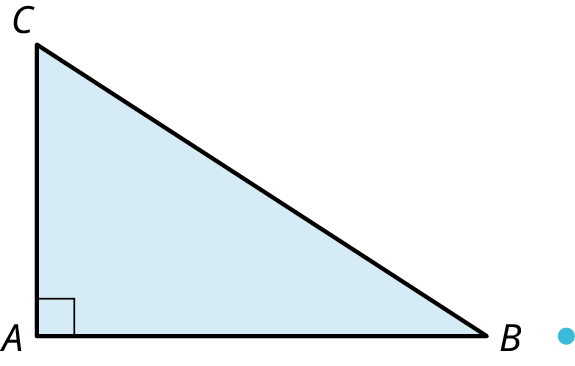 11.
Shapes can be rotated around a point of rotation or a ____________.
12.
What is the name of the transformation that involves a reflection and a translation?
13.
What can a tessellation not have between shapes?
14.
Describe the transformation shown.
11.
Shapes can be rotated around a point of rotation or a ____________.
12.
What is the name of the transformation that involves a reflection and a translation?
13.
What can a tessellation not have between shapes?
14.
Describe the transformation shown.
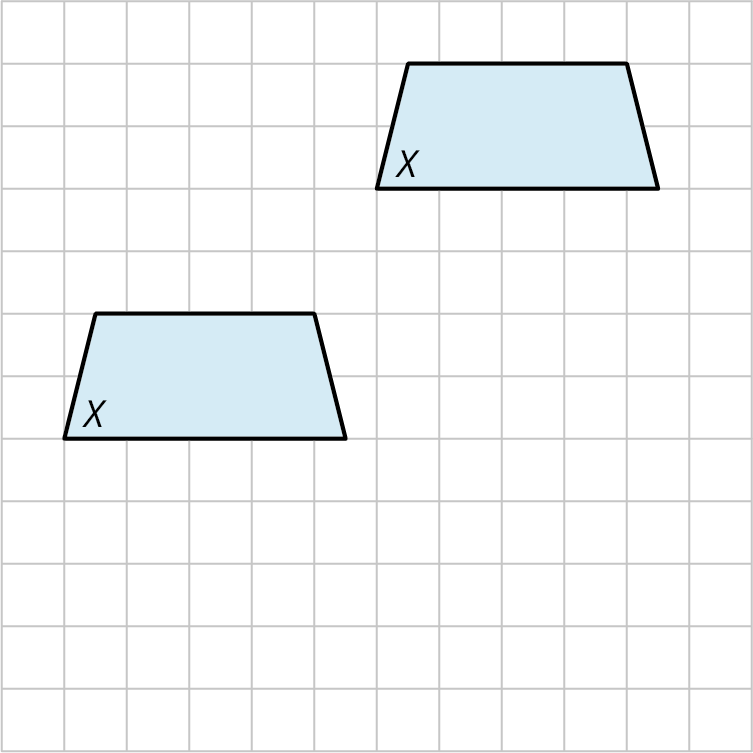 15.
What do we call a transformation that produces a mirror image?
16.
Sketch the reflection of the shape about the dashed line.
15.
What do we call a transformation that produces a mirror image?
16.
Sketch the reflection of the shape about the dashed line.
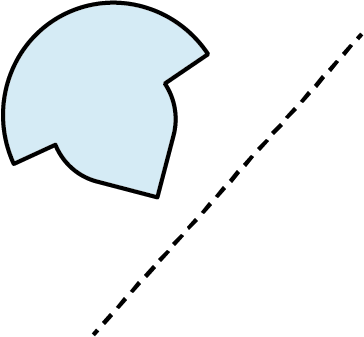 17.
Sketch the reflection of the shape about the dashed line.
17.
Sketch the reflection of the shape about the dashed line.
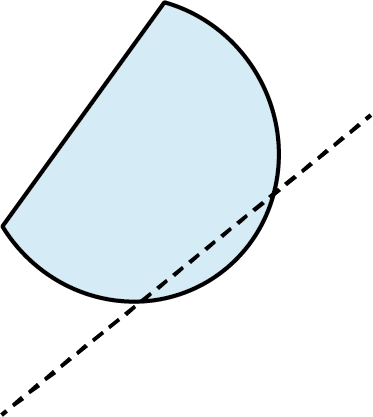 18.
Sketch the translation of the shape 3 units to the right and 3 units vertically.
18.
Sketch the translation of the shape 3 units to the right and 3 units vertically.
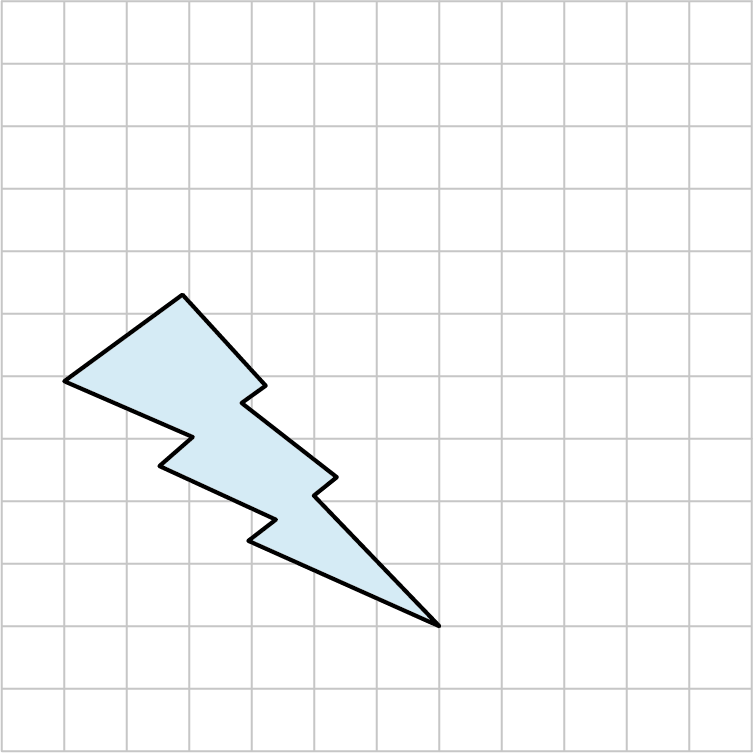 19.
Rotate the shape /**/{45^ \circ }/**/ about the rotation point using point /**/A/**/ as your guide.
19.
Rotate the shape /**/{45^ \circ }/**/ about the rotation point using point /**/A/**/ as your guide.
 20.
Do regular pentagons tessellate the plain by themselves?
21.
What do regular tessellations have in common?
22.
How would we name a tessellation of squares as shown in the figure?
20.
Do regular pentagons tessellate the plain by themselves?
21.
What do regular tessellations have in common?
22.
How would we name a tessellation of squares as shown in the figure?
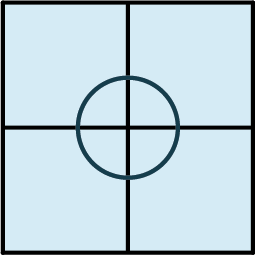 23.
How do we name a tessellation of octagons and squares as shown in the figure?
23.
How do we name a tessellation of octagons and squares as shown in the figure?
 24.
How would we name a tessellation of trapezoids as shown in the figure?
24.
How would we name a tessellation of trapezoids as shown in the figure?
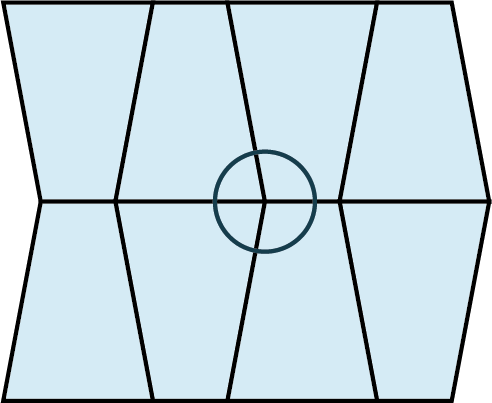
|
【本文地址】